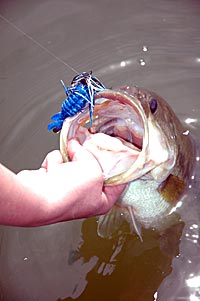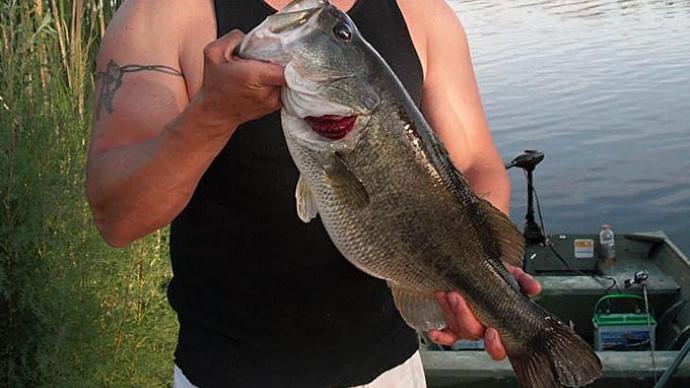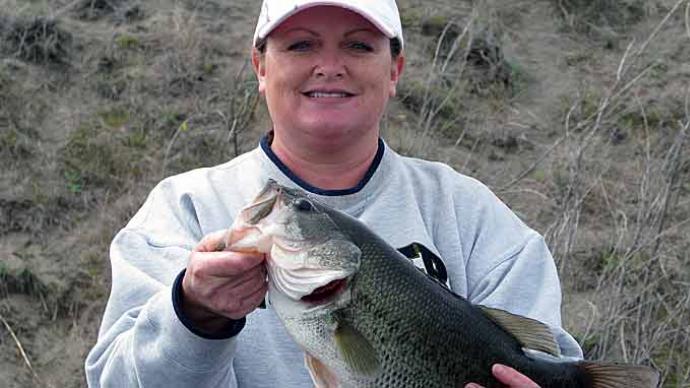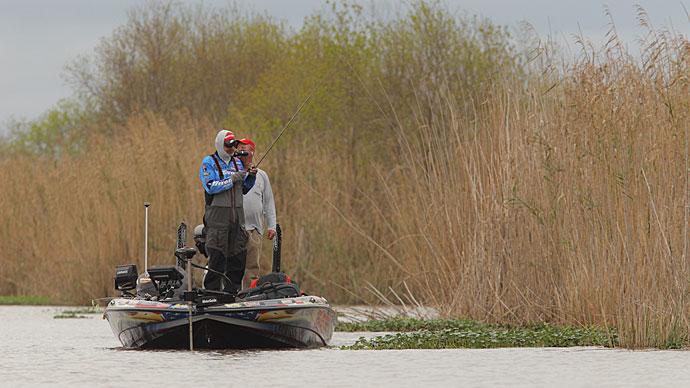
For catching the largest bass that swims on Lake Fork or your favorite waterway, it's hard to beat a jig in the winter and prespawn. Although it is such a simple bait, I've spent the better part of two decades trying to master it, learning on Fork and as a co-angler from jig legends like Richard McCarty, Mark Pack, Roy Greer, Gary Klein, and Kevin VanDam. Although I still miss more jig hits than I'd like, the skills I've learned have resulted in big bass for my guide customers and me, including my biggest ever, a twelve-pound five-ounce prespawn bruiser.
At the February FLW Tour event on Guntersville, I fished jigs through areas where most anglers were throwing Rat-L-Traps and produced enough big bass for a thirty-sixth place finish, including a seven-pounder in the tourney and another between seven and eight pounds in practice. Moreover, my co-angler fished a jig with me on day one, caught an eight-pound five-ounce and an eight-pound eleven-ounce (the two largest co-angler bass of the day), and finished day one in first place with twenty-five pounds nine ounces.
In this article, I'll discuss gearing up for jig fishing. I'll cover the seasonal patterns and presentations for catching lunkers with a jig in my next article.
I start by choosing a jig to match the depth and cover I'll be fishing. While there are several specialized jigs to cover every application, from fishing rocky shores to punching grass mats, I select a general-purpose jig for Fork that allows me to fish both wood cover and work deep weedlines.
My preference is the Lake Fork Trophy Lures Mega Weight jig. Its head is streamlined and very small because it is made of tungsten, so it'll penetrate thick brush and dense grass, plus the super-hard tungsten transmits a better sense of feel than lead. In addition, a big strong hook is required when pulling monster bass out of heavy cover in the spring, and the Owner hook on the Mega Weight jig is razor-sharp and robust. I'll fish anywhere from a one-fourth to three-fourths ounce jig, depending on the day. I usually start with the half-ounce size, but I'll cover weight selection in Part II.
Once you have selected a jig, it isn't complete until you add a trailer. Your trailer choice will alter your jig's size, profile, color, drop speed, and cover penetrating ability. If I'm pitching to specific targets like stumps, docks, or laydowns, I want a streamlined trailer that will drop straight down instead of gliding away from the target. Furthermore, streamlined baits hurry down and are more effective for bass relating to the bottom.</p> <p>When I want a streamlined trailer, I usually go with a Fork Craw, removing the legs and antennae to make it more compact. The slower, gliding fall of larger, flatter trailers work well, especially for bass suspended in grass or wood cover. In addition, the flat surface allows you to skip jigs more effectively under docks and overhanging branches. Plastic pork chunk style baits like Pig Claws are the kings of gliding and skipping. To slow the fall rate and get a lot of action, creature baits like a Baby Fork Creature as a trailer give an ultimate jig action.</p> <p>Once you've decided on a jig and trailer combination, it's time to select the color. Although sometimes color makes a world of difference, springtime jig fishing generally seems to be more about lure placement and presentation than hitting on the perfect color. In fact, in winter and early prespawn, I almost exclusively go with the traditional black and blue combinations. It'll work well in clear and muddy water and on cloudy or sunny days.</p> <p>Once the water warms up more, color seems to matter more. In clearer water and on brighter days, try natural colors like pumpkinseed, green pumpkin, or watermelon. In dirtier water and on cloudier days, dark jigs in blacks, browns, and purples are often better, especially with a bit of a bright color like chartreuse, red, or orange. Most folks meticulously match their trailer to their jig. While that often works well, I've had great results with some pretty obnoxious contrasting colors. For instance, a black-blue jig with a green pumpkin or watermelon red trailer is one of my favorites, as is peanut butter and jelly jig with a watermelon candy trailer. Experiment until you find what works for you on a given day.</p> <p>Now it's time to tie your jig on, and here's where technology makes jig fishing more efficient. New fluorocarbon and braided lines are much more sensitive and abrasion-resistant, allowing you to feel light bites and then winch lunkers out of tight spots. Thirty to sixty-five-pound braid in heavy grass and wood is hard to beat. I prefer to tip my braid with a six to nine-foot leader of twenty to thirty-pound fluorocarbon for reduced visibility to the bass than straight braid. A straight spool of fifteen to twenty-five-pound fluorocarbon is almost as sensitive as braid and stealthier in more open water situations when ultra-high abrasion resistance isn't required.</p> <p>Finally, you'll need to rig this on a lightweight and sensitive rod and reel. I prefer high-speed 7:1 baitcasting reels because they are more efficient by allowing me to reel in after working a stump and then fire to the next one quickly. As for the rod, I look for several attributes. A lightweight stick allows you to fish it all day, and a sensitive rod with a fast tip will help detect those light bites (and the bites from the big fish are usually the lightest).</p> <p>Meanwhile, the rod needs to have a lot of power to pull out big fish while having enough of a tip to pitch or roll cast the jig accurately. I've found the Dobyns Champion Series rods perfect for prespawn jig fishing. I usually opt for the 736C model. A seven-foot-three-inch rod rated Heavy. If the cover is lighter and I'm using fluorocarbon and finesse jigs, the seven-foot-six-inch model 765C is Medium Heavy and has enough tip to throw the lighter baits. In either case, seven-foot and longer rods help make longer pitches and give more control over big fish to help land them once they're hooked.</p> <p>Now that you're all rigged up, I'll dive into the wheres and hows of jig fishing next month I'll<a data-cke-saved-href=">I'll dive the wheres and hows of jig fishing. Until then, here's hoping you catch the lunker of your dreams.




